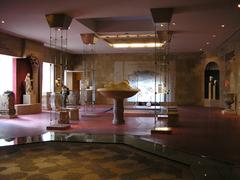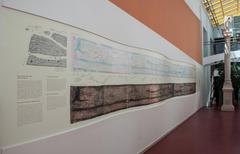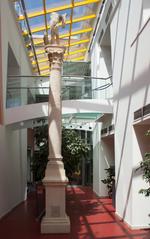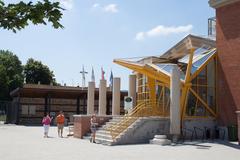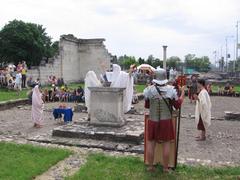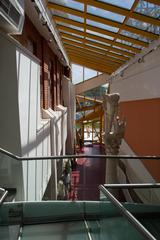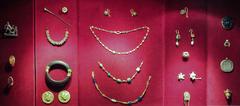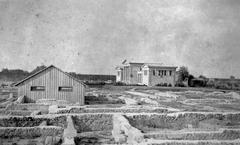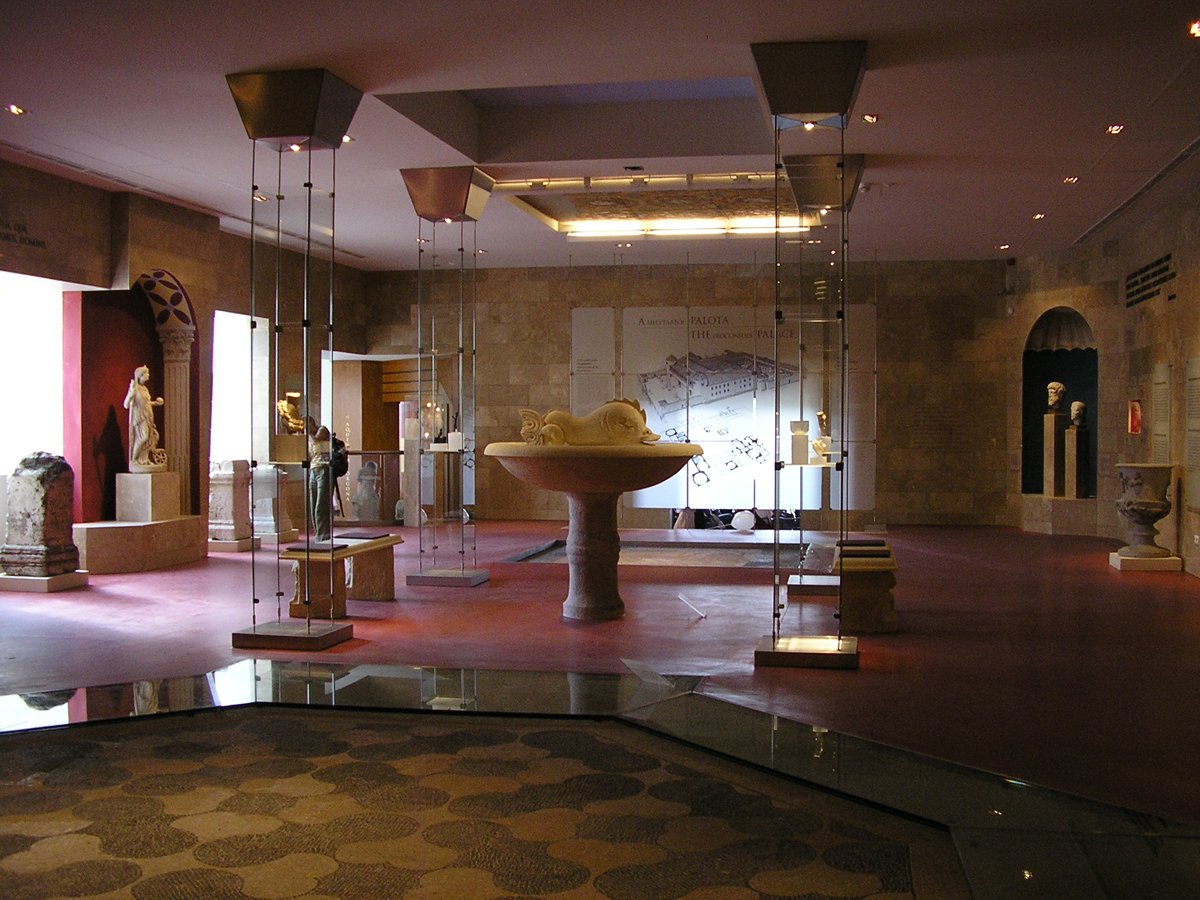
Aquincum Museum Budapest: Visiting Hours, Tickets, and Historical Significance Guide
Date: 14/06/2025
Introduction
Situated in Budapest’s Óbuda district, the Aquincum Museum and Archaeological Park offers a unique window into the ancient world of Roman Pannonia. Once a bustling provincial capital at the edge of the Roman Empire, Aquincum is now a premier destination for anyone interested in Roman history, urban archaeology, and the cultural heritage of Hungary. The museum and park feature a fascinating array of ruins, mosaics, and artifacts that showcase Roman engineering, civic life, and the multi-ethnic character of this frontier city. From the Celtic settlement of Ak-ink—meaning “abundant in water”—to its elevation by Emperor Trajan as the capital of Lower Pannonia, Aquincum embodies centuries of strategic and cultural significance for Budapest (britannica.com, justbudapest.com).
Today, visitors can explore both indoor exhibits and an expansive archaeological park, featuring highlights such as Roman baths, amphitheaters, the famed Aquincum water organ, and remnants of advanced urban infrastructure. The site’s preservation and interpretation provide valuable insights into Roman urban planning, technological innovation, and daily life (budapest.city, Ancient Origins).
This guide covers Aquincum’s historical development, visiting hours, ticketing, accessibility, special events, and travel tips. Whether you’re a history enthusiast, family traveler, or simply curious about Budapest’s ancient roots, Aquincum promises a rewarding and educational experience (Your City Budapest, Holidify).
Contents
- Introduction
- Early Settlement and Roman Foundations
- Aquincum as a Roman Provincial Capital
- Daily Life and Cultural Highlights
- Decline and Rediscovery
- Visiting Aquincum Museum: Practical Information
- Museum Highlights and Interactive Experiences
- Roman Aquincum: Urban Development and Archaeological Significance
- Cultural and Religious Life
- Aquincum’s Role in the Roman Empire
- Legacy and Modern Rediscovery
- Events, Educational Programs, and Visual Resources
- Facilities and Accessibility
- Tips for a Memorable Visit
- Frequently Asked Questions (FAQ)
- Summary and Final Visitor Tips
- References
Early Settlement and Roman Foundations
Long before Roman occupation, the area of Aquincum was settled by the Celtic Eravisci tribe, who named it Ak-ink for its abundant springs (britannica.com). Its strategic location along the Danube made it a natural hub for commerce and defense. Roman military presence began in the 1st century AD, with the establishment of a fortress under Emperor Vespasian. By the late 1st century, a civilian town developed around the military base, laying the groundwork for Aquincum’s urban expansion (justbudapest.com).
Aquincum as a Roman Provincial Capital
In 106 AD, Emperor Trajan designated Aquincum the capital of Pannonia Inferior, transforming it into a thriving administrative, economic, and military center (britannica.com). With a population reaching up to 60,000, the city boasted impressive urban infrastructure: amphitheaters, public baths, temples, forums, and an elaborate aqueduct system (travelingseouls.com, budapest.net). The city’s grid layout, hypocaust heating, and sophisticated sewage reflect the ingenuity of Roman engineering (budapest.city).
Daily Life and Cultural Highlights
Aquincum was a cosmopolitan city, home to Roman citizens, local Celts, and other groups. Archaeological finds—jewelry, glassware, tools, and wall paintings—attest to the vibrancy of daily life (budapestbylocals.com). Public bathhouses were social and technological marvels, while the Aquincum organ, the oldest surviving Roman water organ, showcases the city’s cultural sophistication.
Decline and Rediscovery
The 4th century brought decline due to economic disruption and invasions. By 433 AD, the Huns had taken control, and the city’s ruins were gradually covered by later settlement and industrial development. Systematic excavations began in the late 18th century, culminating in the founding of the Aquincum Museum in 1894 (budapest.city). Today, only a portion of the ancient city has been uncovered, with ongoing conservation and research (budapest.net).
Visiting Aquincum Museum: Practical Information
Location: Szentendrei út 135, 1031 Budapest, Hungary
Hours (2025)
- April–October: Tuesday–Sunday, 10:00–18:00
- November–March: Tuesday–Sunday, 10:00–16:00
- Closed Mondays and public holidays (Your City Budapest).
Tickets (2025)
- Adults: 3,000 HUF
- Students, seniors, youth: 1,500 HUF
- Children under 6: Free
- Family and group discounts available
- Tickets can be purchased at the entrance or online (Aquincum Museum official).
How to Get There
- Public Transport: HÉV suburban railway (line H5) from Batthyány tér, alight at Aquincum station. Buses 34, 106, and 134 also serve the area.
- By Car: Limited parking nearby.
- Accessibility: The main museum is wheelchair accessible; some outdoor ruins have uneven terrain (Budappest.com).
Nearby Attractions
- Óbuda Old Town, Vasarely Museum, Római Part, and the Aquincum Civil Amphitheatre are within easy reach (Your City Budapest).
Museum Highlights and Interactive Experiences
Archaeological Park
Walk amid the remains of streets, villas, shops, public baths, and the amphitheater. The park’s layout mirrors the original Roman city grid, with signage and partial reconstructions (Ancient Origins).
Museum Collections
Indoors, the museum displays mosaics, frescoes, statues, jewelry, coins, and everyday tools. The Roman water organ (hydraulis) is a centerpiece, accompanied by videos and sound recordings (budapest.city, Holidify).
Interactive and Family-Friendly Features
- Science Room: Experiment with ancient engineering principles.
- Reconstructed Mithraeum: Learn about Roman religious practices.
- Lapidarium: Explore carved stones and architectural fragments.
- Temporary Exhibitions: The original 1894 museum houses rotating displays.
- Mythological playground and interactive exhibits for children.
Roman Aquincum: Urban Development and Archaeological Significance
Aquincum’s city plan followed the Roman grid, with a forum, basilica, baths, and temples at its core (Ancient Origins). The aqueduct, supplying water from the Római Lido springs, and hypocaust heating systems, exemplify advanced Roman technology. Excavations have revealed commercial districts, workshops, and shrines, along with two amphitheaters that hosted public events (Wikipedia, Budapest City Guide).
Cultural and Religious Life
The city’s religious landscape was diverse. Several Mithraic temples (mithraea), shrines to Fortuna, and early Christian sites have been excavated, reflecting the spiritual dynamism of Roman Aquincum. The forum and baths served as civic centers, mirroring Roman urban life elsewhere (Ancient Origins).
Aquincum’s Role in the Roman Empire
As the capital of Pannonia Inferior, Aquincum was an administrative and military hub, integral to the defense of the Roman limes (frontier). The legionary fortress and large garrison underlined its strategic importance, while agricultural lands and river trade fueled economic prosperity. Emperors such as Marcus Aurelius are believed to have spent time here, further highlighting the city’s imperial connections (Hungarian Conservative, Wikipedia).
Legacy and Modern Rediscovery
Aquincum’s foundations influenced the development of medieval Buda, and modern excavations have revealed a wealth of artifacts and architectural features. The Aquincum Museum, established in the late 19th century, continues to preserve and interpret this heritage, contributing to Budapest’s reputation as a city layered in history (Ancient Origins).
Events, Educational Programs, and Visual Resources
Floralia Spring Festival
Aquincum’s annual Floralia festival in May brings Roman traditions to life with reenactments, gladiator shows, crafts, and performances. Family workshops and educational activities are scheduled throughout the year (Budapest by Locals).
Visual & Digital Resources
- Virtual Tour of Aquincum Museum
- Onsite exhibits include virtual reconstructions, interactive maps, and audio guides for a deeper experience.
Facilities and Accessibility
- Restrooms, seasonal café, and gift shop.
- Educational resources and accessible tours.
- Museum buildings are wheelchair accessible; some outdoor ruins may be challenging for those with mobility impairments (Holidify).
Tips for a Memorable Visit
- Allocate 2–3 hours to explore the site thoroughly.
- Spring and autumn offer the most pleasant weather and smaller crowds.
- Wear comfortable shoes for uneven terrain.
- Bring refreshments, as food options are limited.
- Check the museum’s website for current hours, ticket prices, and events.
- Photography is allowed for personal use; restrictions apply to flash and tripods.
Frequently Asked Questions (FAQ)
Q: Can I buy Aquincum tickets online?
A: Yes, tickets and guided tours are available online and at the entrance.
Q: Is Aquincum Museum accessible for those with disabilities?
A: The museum building is accessible; some outdoor areas may be less so.
Q: Are guided tours offered?
A: Yes, in several languages. Book in advance for guaranteed availability.
Q: Is Aquincum suitable for families?
A: Absolutely—interactive exhibits and family programs make it ideal for children.
Q: What’s the best time to visit?
A: Spring through autumn is recommended for weather and events.
Summary and Final Visitor Tips
Aquincum Museum and Archaeological Park capture the grandeur and complexity of Roman life on the empire’s edge, offering visitors a hands-on encounter with Budapest’s ancient past. With immersive reconstructions, engaging exhibits, and a full calendar of educational events, the site appeals to a broad audience—from history buffs to families. Its location in Óbuda also makes it convenient to combine with other nearby attractions (Ancient Origins, budapest.city, Your City Budapest, Holidify).
Plan your visit with attention to seasonal hours and special events, and take advantage of digital tools and mobile apps for an enriched experience. Aquincum remains a must-see for understanding the Roman legacy in Hungary and the evolution of Budapest itself (justbudapest.com, budapestbylocals.com).
Prepare to step back in time and witness history come alive in the heart of Budapest.
References
- Aquincum Museum Budapest: Visiting Hours, Tickets & Roman History Guide, 2024, (budapestbylocals.com)
- Aquincum, Britannica, 2024, (britannica.com)
- Aquincum Museum and Archaeological Park: Visiting Hours, Tickets, and Historical Insights in Budapest, 2024, (Your City Budapest)
- Exploring Aquincum Museum: Visiting Hours, Tickets & Budapest Historical Sites Guide, 2024, (Aquincum Museum official)
- Visitor Experience and Practical Information, 2023, (Salterton Arts Review)
- Ancient Origins - Aquincum, 2024, (Ancient Origins)
- Traveling Souls - Tour Aquincum Museum Hungary, 2024, (travelingseouls.com)
- Holidify - Aquincum Museum Sightseeing, 2024, (Holidify)
- Budapest City Guide - Aquincum Museum, 2024, (Budapest City Guide)
